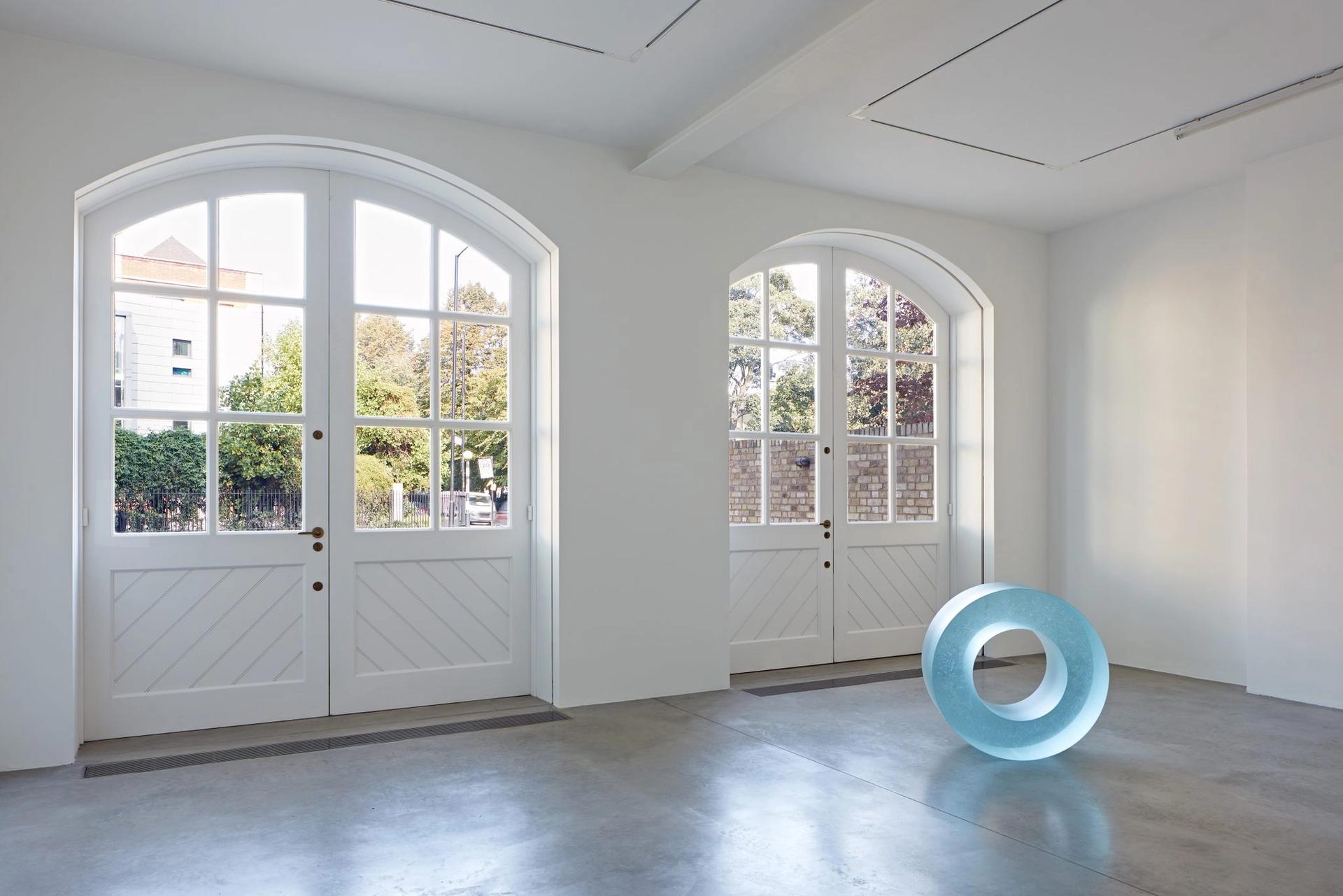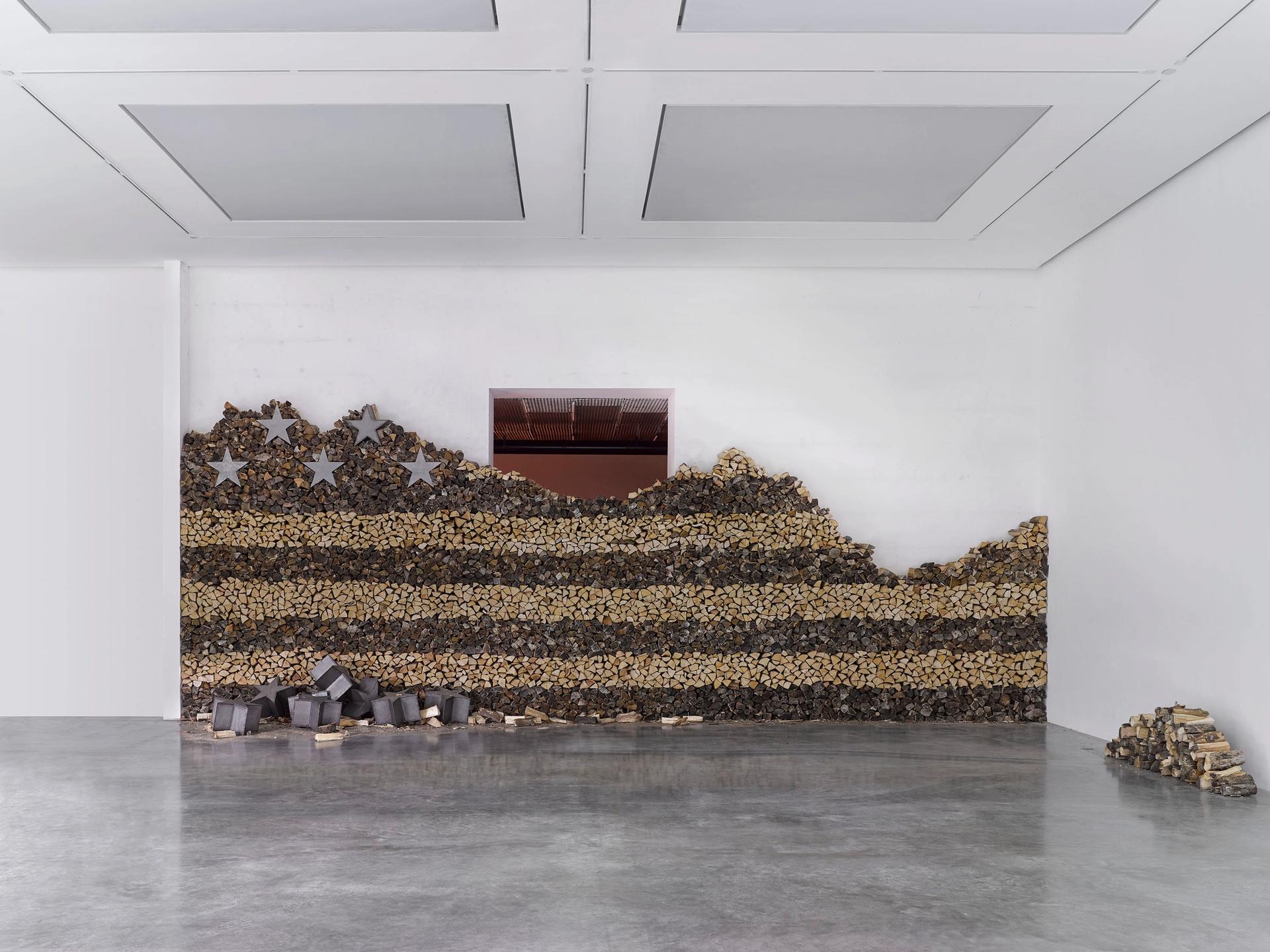While Turner’s Modern World (until 7 March 2021) at Tate Britain is ostensibly about the British painter’s depictions of the burgeoning modern age, it is also very much about how his painting can be seen hurtling towards later artistic developments in its expressiveness and near abstraction. In The Field of Waterloo (1818), depicting the aftermath of the famous battle, bodies are strewn in the foreground, while a torch is raised skyward in a scene reminiscent of Picasso’s masterpiece Guernica, both in its depiction of the casualties of war and in its near-Cubist breakdown of bodies. Meanwhile, Rain, Steam and Speed (1844) is a proto-Futurist masterpiece that shows a hurtling locomotive chasing a speck of a hare.
One of the star loans in the show is the almost-abstract Slave Ship (1840) from the Museum of Fine Arts Boston, which depicts the true story of slaves thrown overboard to drown in order to collect insurance money. It was once owned by John Ruskin, who described it as being the one work on which “to rest Turner's immortality”. Other highlights include two unfinished paintings, The Fall of Anarchy (?) (around 1833-34), showing a skeletal figure reaching out from a ghostly horse, and A Disaster at Sea (around 1835), which is like something from Dante’s Inferno, depicting women and children drowning in writhing waves (again, based on a true event). Britain was at war for much of Turner's life, and even his bucolic landscapes are dotted with troops or Martello Towers—this modern age is a wondrous horror to behold.

Installation view of Blue Glass Roll 405/2 (2019), Ann Veronica Janssens at the South London Gallery Photo: Andy Stagg. Courtesy of South London Gallery
As you pedal on a chrome-plated bicycle around the grand Victorian hall at South London Gallery, the Belgian conceptual artist Ann Veronica Janssens asks you to consider several things: how the vaulted ceiling’s lights bounce off the bicycle’s wheels; what it feels like to press your fingertips firmly to your eyelids, as depicted in the towering print Phosphènes (1997-2018); how best to manoeuvre your vehicle to avoid collision with the oncoming invigilator.
As put forth in this tight retrospective titled Hot Pink Turquoise (until 29 November), Janssens has been concerned with light throughout her entire career. Mostly in its mutability—a trio of ribbed glass sheets wondrously shift colours as you move around them. And in its materiality—one side of a raw steel beam has been polished so thoroughly it acts as a mirrored surface. But despite borrowing much of her formal language from cold Minimalist sculpture, Janssens constantly necessitates playful interactions via these works, often subverting their less-than approachable exteriors to invite participation from the viewer. In an early sculpture, Le bain de lumière (1995), four stacked spherical glass vases are filled with water and placed atop a window ledge overlooking the main road below. As the viewer steps forward, they are absorbed inside the work. Stood still you can observe your hazy silhouette merging with the passing traffic and pedestrians to form a small, suspended world, passing before your eyes.

Danh Vo's Untitled (2020) © The artist. Photo © White Cube (Theo Christelis)
A US flag made from wood logs that once stretched from floor to ceiling has nearly been reduced to ash, which means that it is your last chance to catch Chicxulub, Dahn Vo's "pastoral exhibition" at White Cube, Bermondsey (until 2 November). Designed as a countdown to the now-imminent US presidential election, the work has been burned on-site in real stoves throughout the course of the show, filling several of the gallery’s usually austere spaces with an uncanny warmth. An emaciated version of its former self, it is one of several pertinent reminders in this three-millenia-spanning, thematically sprawling show, that empires all fall to the push of time.
Created by Vo during a reflective period on his farm in East Germany, the exhibition offers us new ways to look at ancient things. Wood is everywhere. Apple trees have been placed in the front courtyard and inside the gallery; an enormous wall arrangement of gilded ornate carvings from 17th-century Portugal is displayed like excavated bones. Humans are everywhere too. Our lost civilisations commemorated in 1st-century Greco-Roman marble sculptures, our new ones in the Johnny Walker-emblazoned crates they are placed inside of. And in several curious, unassuming works, Vo probes into our futures, as fractured and freakish as they are likely to be. One small sapling grows intertwined with a broken 19th-century sandstone eagle—a vision of the strange forms that might populate our planet's next 1,000 years.


